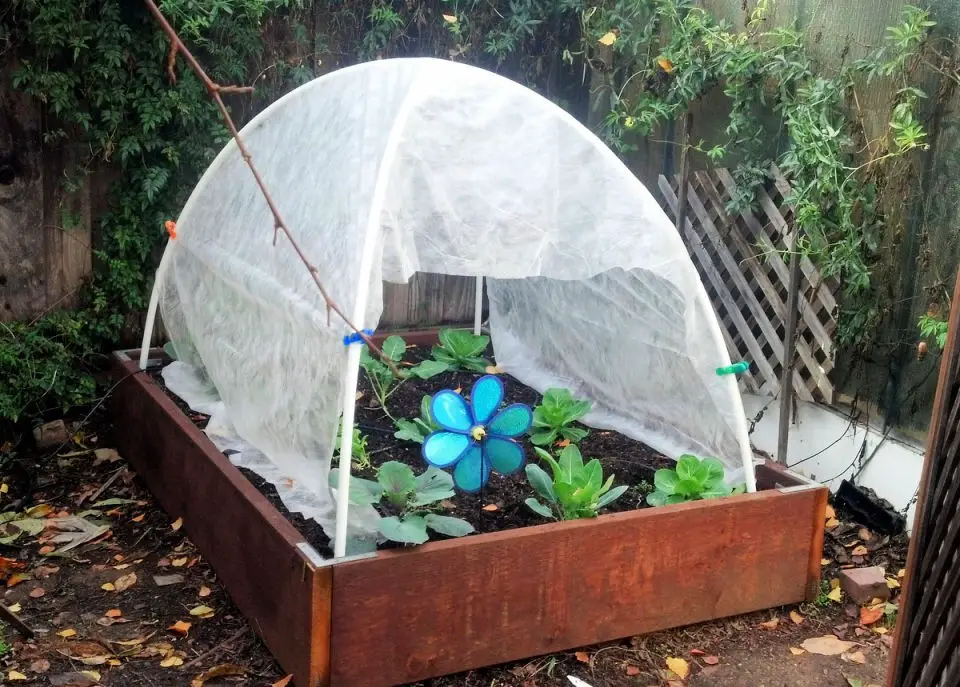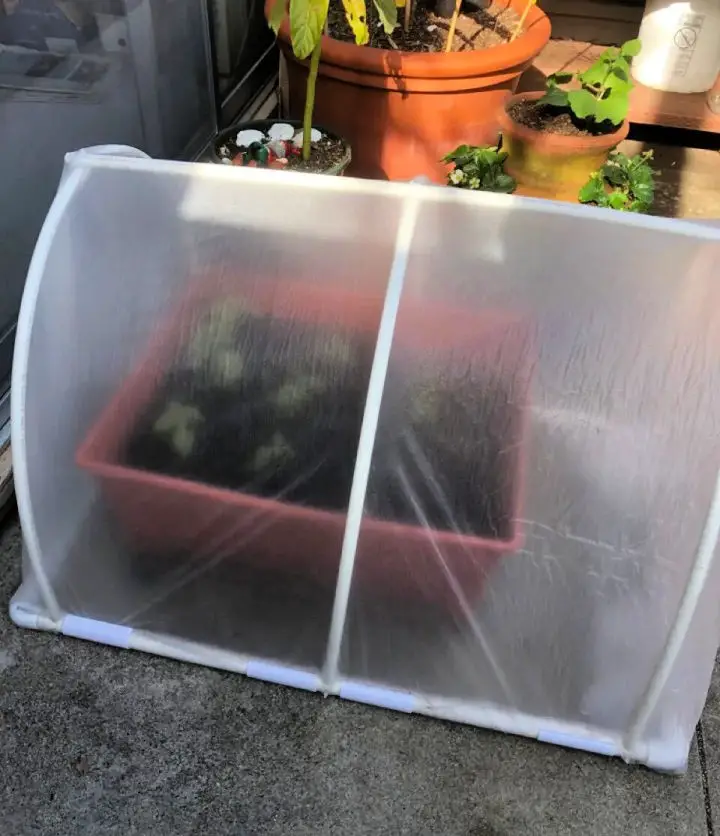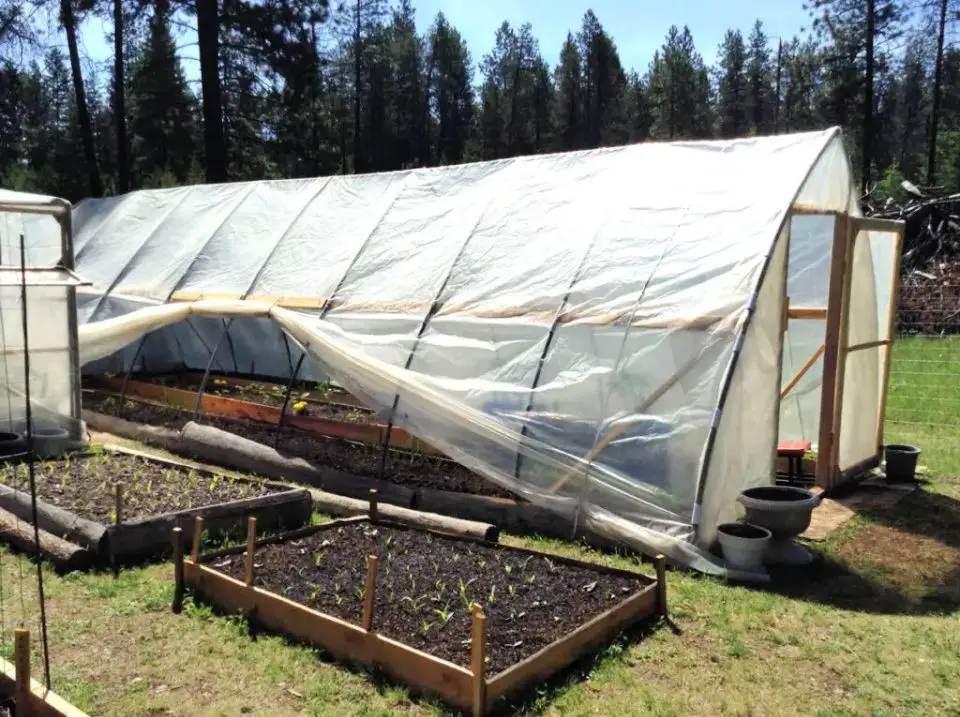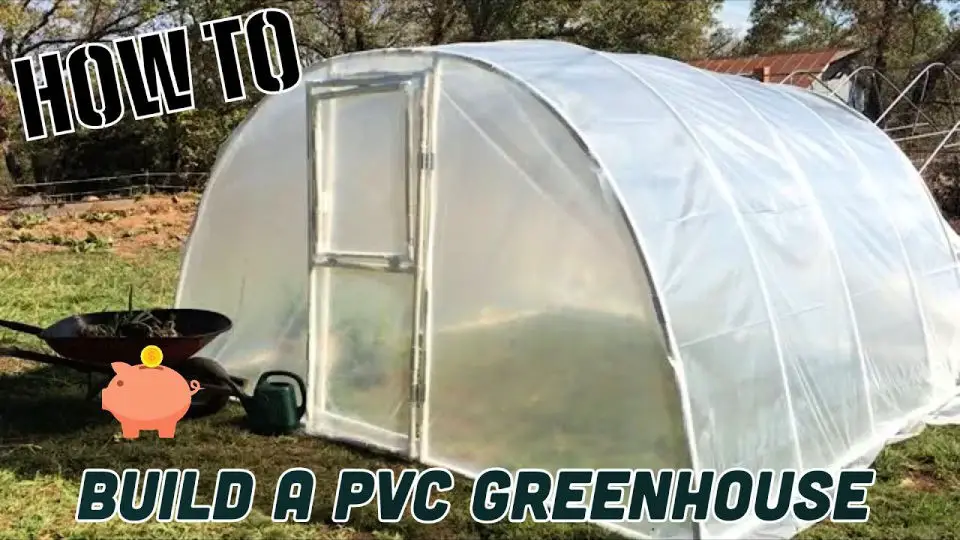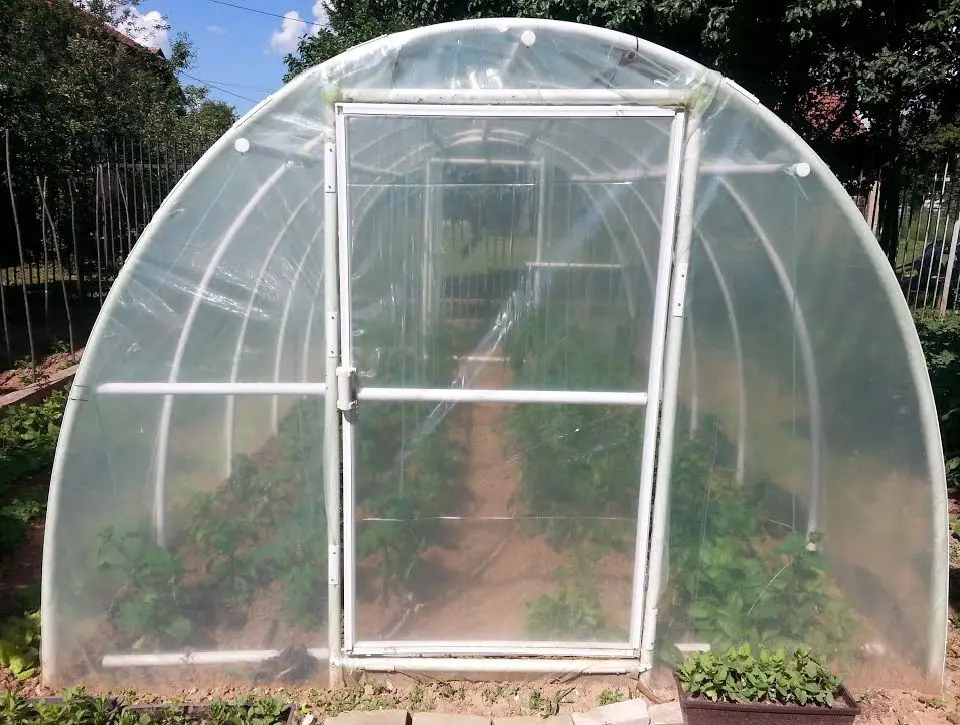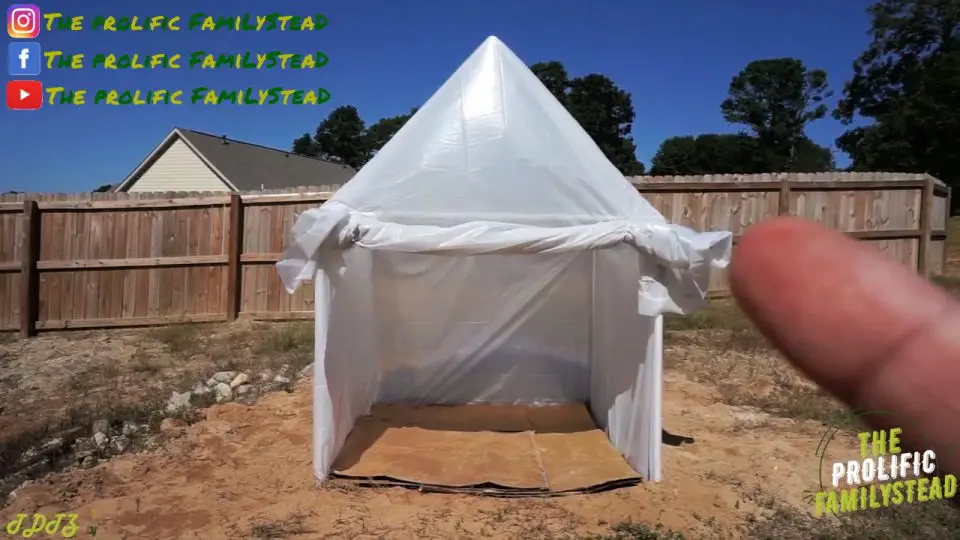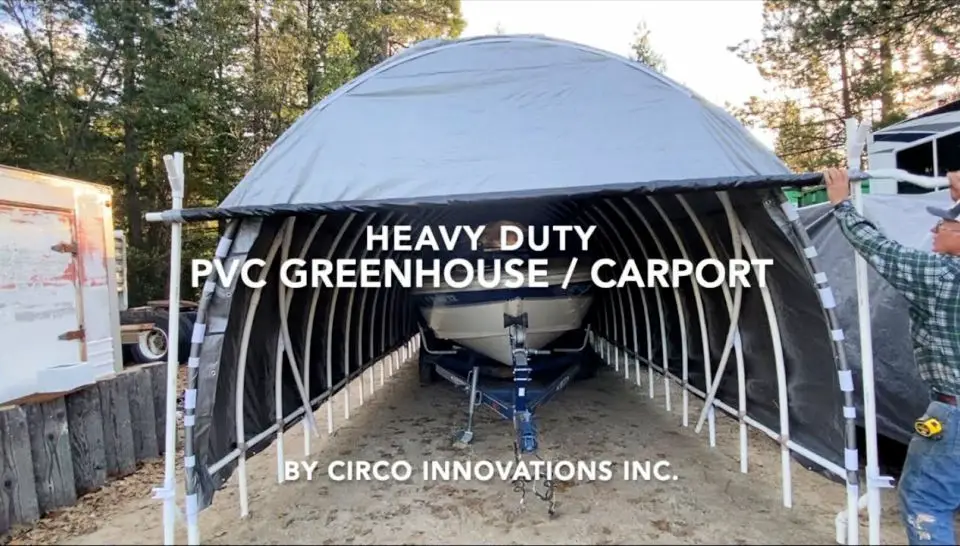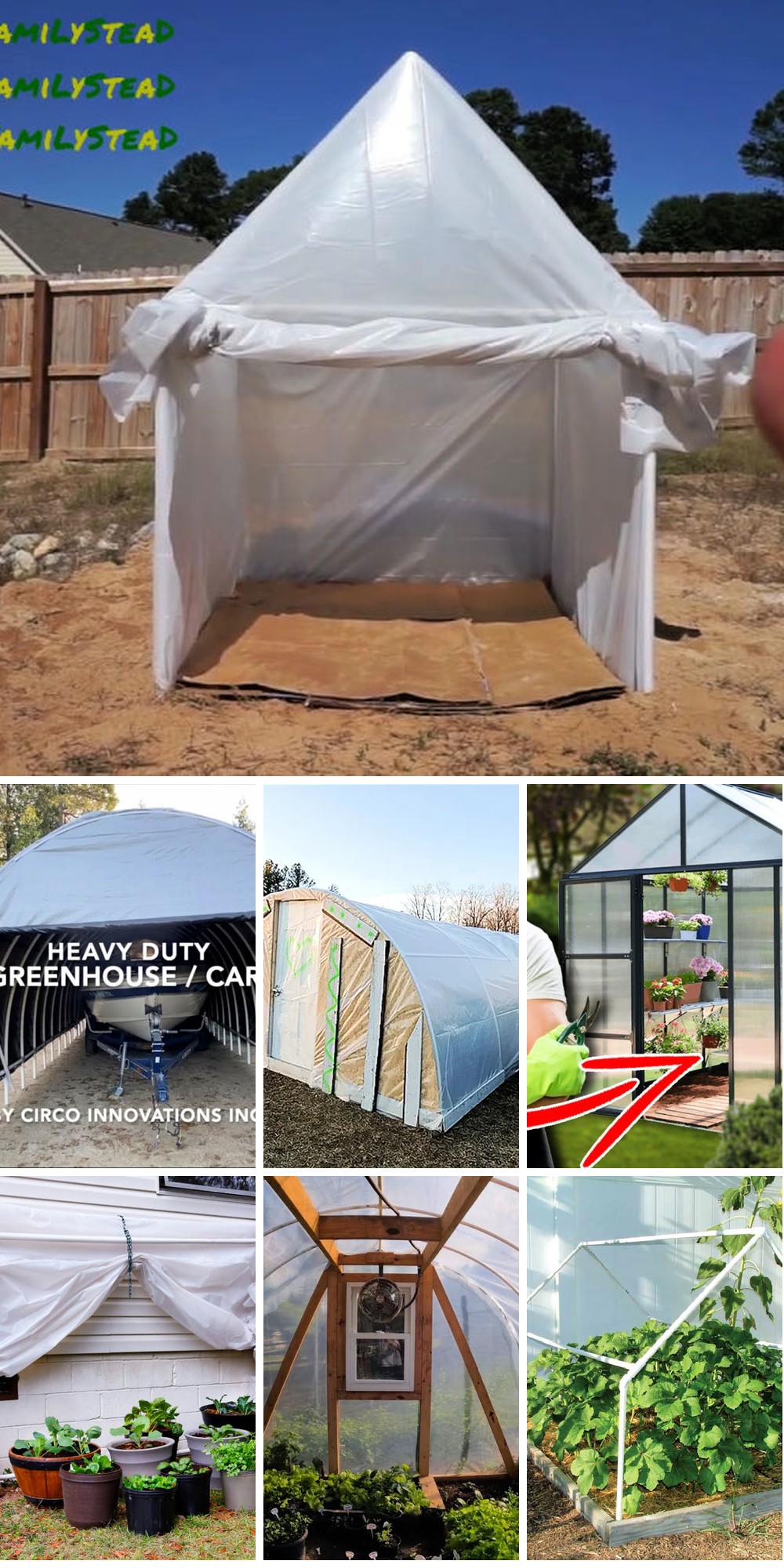
Building a PVC greenhouse is an innovative way to enhance your gardening experience, offering a range of benefits including extending the growing season and shielding your plants from unpredictable weather conditions. With 15 DIY plans at your disposal, you can effortlessly construct a robust and budget-friendly solution tailored to your specific needs. This comprehensive guide provides step-by-step instructions to ensure that building a PVC pipe greenhouse is both an attainable and fulfilling endeavor.
In this detailed overview, we’ll delve into the intricacies of preparing the site and laying the foundation, constructing the frame, installing doors and ventilation, and more. By following these meticulous steps, you’ll gain the knowledge and skills necessary to build a functional and resilient structure that will allow you to nurture your plants in a controlled environment. Whether you’re an avid gardener or simply looking for a new DIY challenge, this guide is designed to empower you to bring your PVC greenhouse project to life.
Understanding Greenhouses
Greenhouses are specially designed structures featuring transparent materials like glass or plastic, allowing for controlled climates that cater to the needs of specific plant species. With sizes varying from compact sheds to large-scale industrial facilities, these enclosed environments enable precise cultivation and growth conditions for a wide range of flora.
Why are Greenhouses Beneficial?
Greenhouses offer a multitude of benefits, making them an attractive option for gardeners and farmers alike. One of the primary advantages is the extended growing season they provide. By shielding plants from harsh weather conditions, greenhouses enable growers to cultivate a wider range of crops year-round. In addition, these structures allow for the creation of a controlled environment, where factors like temperature, humidity, and light can be carefully regulated. This controlled setting also enables the cultivation of a diverse array of plants that may not thrive in your local climate. Furthermore, greenhouses can serve as a natural barrier against pests, reducing the need for chemical pesticides and promoting a more sustainable growing approach.
How Do Greenhouses Work?
The foundation of a functional greenhouse relies on the Greenhouse Effect. As solar radiation from the sun permeates the transparent walls, it’s absorbed by the plants and soil within. This energy is subsequently converted into heat, which warms the enclosure. The heat remains trapped due to the glass or plastic walls and roof preventing its escape. By grasping these fundamental principles, you’ll be well-equipped to maximize your DIY PVC greenhouse’s potential. In the following sections, we’ll explore the intricacies of construction in greater detail.
Why Build a PVC Greenhouse?
Constructing a PVC greenhouse offers numerous benefits for both novice and experienced gardeners alike. The advantages of using PVC pipes are multifaceted, making it an attractive option for those looking to create a functional and rewarding green space.One of the primary advantages is its cost-effectiveness. PVC materials tend to be more affordable compared to metal or wood frameworks, allowing you to build a fully functional greenhouse without breaking the bank. This affordability makes it accessible to DIY enthusiasts of all skill levels, who can assemble a sturdy structure without needing advanced tools or carpentry skills.The durability of PVC pipes is another significant advantage. Unlike other materials prone to rot, rust, and corrosion, PVC remains resilient against these issues, ensuring your greenhouse can withstand various weather conditions year-round. This provides a safe environment for your plants to thrive.PVC greenhouses also offer flexibility. The lightweight nature of the material allows for easy modifications and expansions as your gardening needs evolve. Whether you’re looking to increase the size of your greenhouse or adjust its shape, PVC’s adaptability makes it an ideal choice.Finally, the translucency of PVC greenhouses covered with polyethylene sheeting or tarp provides optimal light diffusion. This ensures your plants receive the right amount of sunlight without the risk of harsh exposure, promoting healthier growth and development.In understanding these factors, it becomes clear that a PVC greenhouse can significantly improve gardening, extend the growing season, and protect plants affordably.
Build Your Own Greenhouse DIY Using PVC Pipe
With the goal of creating a durable and efficient greenhouse from scratch, this guide aims to demystify the process for DIY enthusiasts. By focusing on simplicity and functionality, even those new to building can follow along with ease. The result is a reliable and productive gardening space that thrives regardless of the weather.
What You Will Need
To construct a sturdy and weather-resistant structure, you’ll need a variety of materials. For the framework itself, use high-pressure PVC pipes measuring 32 mm in height. For the door frame, opt for 25 mm diameter pipes. Galvanized metal stakes or pipes will come in handy for footings, providing a solid base for your construction. If you’re looking to create a solid floor or exceptionally secure footings, consider using concrete. To protect your structure from the elements, cover it with UV-resistant polyethylene sheeting or tarps. A selection of miscellaneous fittings, including T-joints, elbows, and caps, will aid in connecting the pipes. For bending those PVC pipes into shape, have a bag of sand at the ready. As for tools, be prepared to use a saw, drill, oven (for certain types of pipe), scissors, and hot glue gun. Finally, don’t forget fasteners and clips to secure that sheeting in place.
Preparing the Site and Laying the Foundation
When it comes to setting up your greenhouse, start by selecting a spot that receives plenty of sunlight throughout the day. Clear the area of any debris and level it as much as possible to create a solid foundation. Once you’ve got your site prepared, think about the size of your greenhouse. A 4×3.5 meter footprint is a great starting point for most home gardeners looking to get started with their own greenhouses. Next, consider the type of foundation you want to use. You can opt for a permanent concrete slab or secure the footings in place using concrete while leaving the ground natural inside. Whatever approach you choose, make sure the anchors for your PVC structure are firmly embedded in the concrete or the ground itself.
Constructing the Frame
When it comes to constructing your greenhouse’s frame, cutting and bending PVC pipes is an essential step. To achieve the perfect fit, measure and cut the PVC pipes according to your structure’s width and height. For added flexibility, heat the PVC pipes using the sand heating method in an oven before bending them into hoops that will provide a snug fit. Once you’ve prepared the individual components, it’s time to start assembling the frame. Begin by installing vertical stakes into the ground or concrete base, then slide the bent PVC pipes over these stakes to form the hoops. To add additional stability and create a ridge line, use T-joints and longer PVC lengths to secure the structure in place.
Covering Your Greenhouse
To ensure your structure remains protected from the elements, begin by measuring and cutting a UV-resistant polyethylene sheeting or tarp that covers the entire framework with some extra for securing. This will provide an effective barrier against harsh weather conditions. Next, start at one end of the structure and secure the sheeting to the base before pulling it over the top and fastening it to the other side. Use clips, ties, or a strong adhesive to keep the covering taut and secure, effectively blocking any wind that may try to disturb it.
Installing Doors and Ventilation
When building a door for your DIY greenhouse, start by constructing the frame using a 25mm PVC pipe. To create a simple hinge mechanism, slide a smaller 32mm pipe into the larger one and secure it to the frame. This will provide a sturdy foundation for your door.
To ensure the door fits seamlessly within the main structure, wrap the frame with sheeting and secure it in place. You can add latches or handles as needed to complete the design.
In terms of ventilation, consider incorporating windows or vents at the top or sides of your greenhouse to regulate temperature and humidity levels. These openings can be designed as simple flaps that can be propped open or closed as required.
Final Touches
To complete the setup, ensure that every component is securely anchored in place. This might involve adding supplementary anchors to the base or reinforcing the covering with additional fasteners to prevent any potential movement or damage. Additionally, take time to plan out the interior layout of your space, considering the placement of beds, shelving units, and hydroponic systems. Install a functional irrigation system and create a clear pathway for easy access to all plants, allowing for seamless maintenance and observation.
Video Tutorial
For those who prefer a hands-on approach or want a visual complement to our written guide, I recommend watching this YouTube tutorial on building a PVC pipe greenhouse. This video not only reinforces the step-by-step instructions outlined in this text but also provides a unique perspective on how each component fits together to create a sturdy and efficient greenhouse structure. By combining the written guide with this supplementary visual aid, you’ll gain a comprehensive understanding of the DIY process and be better equipped to tackle your project. With the rewards of having a year-round gardening solution within reach, building your own greenhouse is an investment that will yield significant benefits for your plants and your gardening experience.
Safety Tips
When constructing a greenhouse, it’s crucial to prioritize safety to avoid potential hazards. To ensure a safe and successful project, consider the following essential guidelines:
Proper Lifting Techniques: To prevent back strain, always bend at the knees when lifting heavy objects instead of relying on your lower back.
Safety Equipment: Wear appropriate gear such as safety glasses when cutting PVC and gloves when handling plastic covering to shield yourself from sharp edges and other potential dangers.
Well-Ventilated Workspace: When working with adhesives or sealants, maintain a well-ventilated area to prevent inhaling harmful fumes that could cause health issues. This is particularly important for individuals who may be more susceptible to the effects of these chemicals.
Hydration and Rest: Building a greenhouse can be physically demanding, especially in warm weather conditions. To avoid fatigue and dehydration, take regular breaks and prioritize staying hydrated throughout your project.
Maintaining Your Greenhouse
To ensure your greenhouse serves as a thriving sanctuary for your plants, it’s crucial to adopt a regular maintenance routine. This encompasses several key aspects: First and foremost, temperature control is vital. Monitor the internal climate closely, making adjustments as needed using heaters or fans to maintain an optimal environment for your plants’ growth. Next, watering becomes a critical component, as greenhouse-based plants often require more frequent hydration than their outdoor counterparts. Regularly inspect soil moisture levels to avoid over- or under-watering. Additionally, cleanliness is paramount in preventing the spread of diseases and pests. Regularly remove dead plant material and disinfect surfaces as necessary to maintain a pristine environment. Lastly, proper ventilation is essential for regulating temperature and humidity levels, as well as providing your plants with a constant supply of fresh air. By prioritizing these maintenance tasks, you’ll be rewarded with a healthy, thriving greenhouse ecosystem.
Troubleshooting Common Issues
While constructing or utilizing a polyvinyl chloride (PVC) greenhouse, you’re likely to stumble upon certain prevalent challenges. To address these hurdles, it’s essential to be aware of the potential issues and their corresponding solutions. For instance, when building or using a PVC greenhouse, some common problems that may arise include…
Problem 1: PVC Structure is Unstable
When dealing with an unstable PVC structure, a common culprit is the absence of adequate support. To mitigate this issue, consider augmenting your setup with supplementary PVC pipes or connectors to provide added reinforcement. Furthermore, it’s crucial to ensure that each PVC pipe is securely fastened into its corresponding connector, thereby preventing any potential weakness or compromise in the overall structure.
Problem 2: Temperature Fluctuations
When it comes to maintaining optimal conditions within a greenhouse, one common challenge is addressing temperature fluctuations that can occur throughout the day and night. To mitigate this issue, consider implementing a ventilation system to circulate air and regulate heat during the hottest hours of the day. Additionally, using shade cloth or other shading solutions can help reduce solar radiation and keep the interior cooler. In contrast, colder nights may necessitate a small greenhouse heater to maintain a consistent temperature, ensuring optimal conditions for plant growth.
Problem 3: Condensation Buildup
To mitigate the issue of condensation buildup and subsequent mold growth within your greenhouse, it’s crucial to maintain optimal ventilation. This can be achieved by ensuring your structure allows for adequate airflow. Additionally, consider incorporating a dehumidifier into your setup to further minimize moisture levels, creating a more controlled and healthy environment for your plants.
Problem 4: Pests and Diseases
When it comes to greenhouses, even the most diligent efforts can’t completely eliminate the risk of pests and diseases. A proactive approach is essential in identifying and addressing any issues that may arise. Conduct regular inspections of your plants, keeping a keen eye out for signs of infestation or infection. If you do encounter problems, act swiftly by removing affected plants to prevent the issue from spreading further. Whenever possible, opt for organic pest control methods that not only eliminate the problem but also promote a healthy environment for your plants.
It’s essential to adopt a growth mindset when faced with setbacks in your greenhouse endeavors. Instead of viewing issues as obstacles, see them as opportunities to learn and refine your approach. With patience and persistence, you’ll be better equipped to handle any challenges that come your way.
Planting Guide for Your Greenhouse
For a bountiful harvest, selecting the perfect plants for your greenhouse and mastering their care is essential. To set your project up for success, follow this comprehensive guide:
Choosing the Right Plants
While not all plants are suited for greenhouse cultivation, many species flourish in these controlled environments. Among the most popular choices are vegetables like tomatoes, cucumbers, peppers, lettuce, and spinach, which benefit from the consistent temperatures and humidity levels found within a greenhouse. Herbs such as basil, parsley, oregano, and mint also thrive year-round under these conditions. In addition to leafy greens and herbs, many types of flowers including orchids, roses, and lilies are well-suited for growth in a greenhouse environment.
When to Plant
When it comes to planting, timing is everything. Different plants have their own ideal times to get started, with some thriving in the spring and others blooming best when sown in the fall for a winter bounty. To ensure success, always consult the specific planting guidelines for each plant variety to determine the optimal time for your specific needs.
Caring for Your Plants
Proper plant care is vital for their health and growth. To ensure your greenhouse plants flourish, adhere to the following general guidelines:
Watering habits should be adjusted accordingly. While outdoor plants typically require less frequent watering, greenhouse plants may need more attention. Check the soil regularly, and water only when it feels dry to the touch.
Temperature control is also crucial. Monitor the greenhouse temperature and make adjustments as needed, keeping in mind that most plants thrive in a range of 60 to 80 degrees Fahrenheit.
Lighting is another essential aspect. If your greenhouse doesn’t receive sufficient natural light, consider supplementing with grow lights to meet your plants’ needs.
Fertilization plays a vital role in providing your plants with the necessary nutrients. Utilize a balanced fertilizer and follow the package instructions for application rates.
It’s important to remember that every plant is unique and may have specific care requirements. Always research thoroughly and don’t hesitate to seek guidance if you’re unsure, ensuring the best possible outcomes for your greenhouse plants.
FAQS About Building a PVC Greenhouse
In this section, we’re tackling the most common queries surrounding the construction of a PVC greenhouse, aimed at streamlining your project and setting you up for success.
What materials do I need to build a PVC greenhouse?
When it comes to building a PVC greenhouse, you’ll need to gather the following essential components: Firstly, you’ll require high-pressure PVC pipes (32 mm) for the frame and slightly smaller 25 mm pipes for the door. Additionally, galvanized metal stakes or pipes will be necessary for creating footings. For covering the structure, UV-resistant polyethylene sheeting or a tarp is a must-have. You’ll also need various fittings such as T-joints, elbows, and caps to connect your PVC pipes. A saw, drill, oven (for bending PVC pipes), scissors, and hot glue gun will be necessary tools for assembly. To secure the sheeting in place, you’ll require fasteners and clips. If you opt for a solid floor or secure footings, concrete will be an essential material to have on hand.
How do I choose the right location for my PVC greenhouse?
When establishing a site for your greenhouse, prioritize a location that receives consistent sunlight throughout the day. Before construction begins, clear the area of any debris and ensure it’s level and even. Additionally, consider the local wind patterns and aim to position the greenhouse in an area that provides natural protection from strong gusts, if feasible.
Can I build a PVC greenhouse on a budget?
One of the most significant benefits of constructing a PVC greenhouse lies in its affordability. Unlike other frameworks like metal or wood, PVC materials tend to be significantly cheaper. Furthermore, you have the flexibility to customize the size and layout of your greenhouse to suit your budget and available space, making it an attractive option for those looking to create a functional and affordable growing environment.
How do I secure my PVC greenhouse against strong winds?
To safeguard your PVC greenhouse from harsh winds, implement these essential precautions: By digging deep holes and embedding the anchors firmly into the ground or a concrete base, you’ll establish a solid foundation. Additionally, utilize robust fasteners and clips to keep the polyethylene sheeting tautly secured to the frame. For added stability, consider installing extra anchors at the structure’s base. In regions with extreme wind conditions, it may be necessary to anchor your greenhouse to nearby heavy objects or structures, further reinforcing its overall stability.
Is it difficult to build a PVC greenhouse?
For DIY enthusiasts of all skill levels, building a PVC greenhouse is an achievable project. The simplicity of working with PVC pipes, combined with the wealth of available guides and tutorials, makes the construction process relatively straightforward. While it does require some physical effort and patience, particularly during the bending and securing of PVC pipes and sheeting, the end result can be a unique and rewarding DIY accomplishment.
How do I maintain proper temperature and ventilation in my PVC greenhouse?
To optimize your greenhouse’s thermal conditions, prioritize proper ventilation and temperature control. One effective approach is to install vents or windows on the top or sides of the structure. These can be designed as simple flap openings that allow for easy adjustment to accommodate varying climate conditions. Additionally, consider deploying shade cloth over the greenhouse during peak sun hours to prevent overheating and promote a stable internal environment. Furthermore, it’s essential to regularly monitor the internal temperature and make adjustments as needed to ensure your plants thrive in a comfortable zone, neither too hot nor too cold.
Can I expand my PVC greenhouse later on?
The versatility of PVC is one of its greatest strengths, particularly when it comes to creating greenhouses. Because PVC is lightweight and flexible, you can easily make adjustments or add more components as your gardening needs evolve. For instance, if you find that your greenhouse requires more space or a different shape, you can simply add more PVC pipes and extend the covering. In fact, it’s often wise to plan for potential expansion from the outset when designing your initial structure, ensuring that your greenhouse can adapt to changing circumstances with ease.
15 DIY PVC Greenhouse Plans (Build A PVC PIPE Greenhouse)
Embark on a journey of self-sufficiency by creating a unique and functional PVC pipe greenhouse. With over 15 carefully curated DIY plans, building a PVC greenhouse has never been easier. Follow each plan’s meticulous steps to bring your gardening vision to life, starting today.
How to Build a PVC Greenhouse
Starting a DIY greenhouse project is an exciting way to safeguard your plants and prolong the growing season without denting your wallet. A comprehensive guide from Struck Corp provides a captivating and straightforward approach to building a sturdy yet affordable greenhouse using PVC pipes, making it accessible to gardeners of all levels. The step-by-step instructions ensure a seamless journey from material selection to finishing touches, guaranteeing success for even the most novice DIY enthusiasts. As you embark on this rewarding project, let Struck Corp’s expert guidance inspire and support your efforts in creating a haven for your plants, elevating your gardening experience and taking a significant stride toward sustainability.
DIY 12×30′ PVC Greenhouse for Under $360
Get set to extend your growing season in an eco-friendly and cost-effective way with a DIY PVC Greenhouse, courtesy of Lady Lee’s Home. This comprehensive guide provides a step-by-step tutorial to help you build a sturdy greenhouse that can accommodate various gardening needs, regardless of your skill level or expertise. Whether you’re eager to start seedlings early or shield plants from the elements, this project offers a perfect blend of functionality and satisfaction for passionate gardeners seeking to take control of their planting schedule.
Cheap DIY PVC Hoop House for Winter
Want to safeguard your garden from winter’s chill without denting your wallet? Look no further than building a budget-friendly hoop house with our clear-cut, step-by-step guide. All you need are fundamental materials readily available at your local hardware store, and you’ll be shielding your veggies from the cold and pests in no time. Our comprehensive tutorial highlights clever uses for rebar, PVC pipe, and floating row-cover fabric to keep your plants snug and secure. Perfect for DIY enthusiasts and gardeners seeking practical projects that deliver results. Get started today by visiting our tutorial and discover how you can keep your garden thriving all year round.
How to Make a PVC Cold Frame
Transform your gardening experience by extending the growing season with a creative DIY PVC cold frame, inspired by Grit’s practical guide. This compact, greenhouse-like structure safeguards early spring and late autumn crops, allowing you to cultivate cool-season vegetables year-round. By repurposing affordable PVC materials and employing straightforward techniques, you can create a resilient and flexible framework for maximizing the yield of your harvest. Perfect for gardeners seeking to capitalize on every season’s potential, this cold frame design brings warmth and protection to your garden during the chillier months.
Build a Fold-Down PVC Greenhouse
If you’re eager to protect your plants from the elements, a custom fold-down greenhouse is just the solution. Based on instructions from Bonnie Plants, constructing one is surprisingly easy and requires minimal materials. This budget-friendly design combines simplicity with efficiency, making it perfect for gardens that receive at least six hours of sunlight daily. By using PVC and plastic, you can build a weather-resistant structure that effortlessly pops up or down in response to temperature changes. With the ability to complete this project in an afternoon, you’ll be able to safeguard your greens season-long, ready to face any early frosts or cold snaps that may come.
Making a Mini Greenhouse Out of PVC Pipe
Create a cozy retreat for your young plants by constructing a mini greenhouse using PVC and PEX. This innovative structure will shield them from pesky slugs and birds, allowing them to thrive in a safe environment. By following the comprehensive step-by-step guide at Medium, you’ll gain the expertise to build a compact yet extendable greenhouse that can prolong your plants’ growing season. The sense of accomplishment you’ll derive from this rewarding DIY project is unmatched!
DIY Hoop House Style Greenhouse Using PVC
Transforming your gardening experience without breaking the bank is possible with a DIY hoop house-style greenhouse. At Country Homestead Living, we’ve successfully created a budget-friendly structure that can withstand 75 mph winds, revolutionizing our approach to homesteading. Our journey shows that with simple materials like PVC electrical conduit and UV-treated PVC clips, you too can construct a sturdy and cost-effective greenhouse. This guide will walk you through the process of building a resilient greenhouse, ensuring your garden thrives year after year. With a focus on sustainability, this project is perfect for elevating your homesteading game. And while you’re at it, why not explore creative pallet outdoor furniture ideas to transform your patio into a stylish and cozy retreat? Our unique DIY projects will inspire you to build your own outdoor oasis.
Easy DIY PVC Arched Greenhouse
Want to take your gardening skills to the next level? Building a PVC arched greenhouse is an excellent way to do just that. This simple, yet effective guide will walk you through every step of the process, making it accessible to gardeners of all experience levels. Not only is this solution sturdy and cost-efficient, but it also allows you to extend your growing season, giving you more time to enjoy the fruits of your labor. To make things even easier, we’ve put together a step-by-step video that breaks down the process into manageable segments. With this tutorial, you’ll be able to start your gardening project right and achieve success sooner.
Build Your Own PVC Frame Greenhouse
Start your greenhouse journey with simplicity! Our step-by-step guide on constructing a PVC frame greenhouse provides novice gardeners with an accessible route to extending their growing seasons. Utilizing high-quality, furniture-grade PVC for a premium appearance, we illustrate the straightforward assembly process using readily available materials. This flexible design allows for customizable sizes, making it ideal for gardeners seeking a hassle-free approach to protecting and nurturing their plants. For a comprehensive tutorial, visit GreenhouseMegastore.
Easy Way to Build PVC Greenhouse
Constructing your own PVC greenhouse may seem daunting, but with our step-by-step video guide, it’s surprisingly accessible. Perfect for gardening enthusiasts seeking to extend their growing season, this DIY project is designed to be completed in a series of manageable steps. By following our easy-to-follow tutorial, you’ll be able to create a functional and budget-friendly greenhouses that will provide your plants with the protection and care they need, all while keeping costs under control.
DIY PVC Greenhouse – Step by Step Instructions
Create your own PVC greenhouse in just a day with this step-by-step guide, perfect for gardening enthusiasts looking to extend their growing season without breaking the bank. By following this comprehensive and easy-to-follow tutorial, you’ll learn how to select the right materials and assemble the structure, making it accessible for everyone. The design utilizes pressure-treated lumber and PVC pipes to ensure durability against weather elements, making it ideal for small to medium-sized gardens. Not only will this DIY project enhance your gardening experience, but it also makes for a satisfying weekend undertaking. Simply follow the tutorial to get started.
Handmade PVC Pipe Greenhouse Tutorial
Create a lasting PVC pipe greenhouse with ease by following this comprehensive video tutorial. The interactive guide will walk you through the process of constructing a sturdy structure from scratch, starting with digging foundation holes and progressing to securing the frame and covering it with plastic sheeting. You’ll gain insight into assembling the frame using PVC pipes and connectors for maximum stability. This DIY-friendly approach is ideal for gardeners on a budget seeking a reliable way to protect their plants year-round. With its simplicity, clear instructions, and achievable results, this project is perfect for beginners and experienced gardeners alike—get started today!
DIY PVC Pipe Greenhouse on a Budget
Join Oliver on his DIY adventure as he builds a budget-friendly PVC pipe greenhouse. If you’re looking to create a cozy and efficient home for your plants, like his thriving lemon trees, then this guide is the perfect starting point. With simple tools and some creative problem-solving, Oliver shows how to construct a sturdy plant sanctuary without breaking the bank. To get a step-by-step look at the process, complete with valuable tips and tricks, check out Oliver’s enlightening video. Get inspired to build a functional and frugal plant haven that will help your green thumb grow!
Building a Greenhouse Using PVC pipe
Ready to create your own eco-friendly haven? Building a greenhouse with PVC pipes is an accessible and enjoyable DIY project that can be completed with ease. Our comprehensive guide on Home on the Tools takes you through each stage, from laying the groundwork to securing the cover. This rewarding endeavor is ideal for gardening enthusiasts seeking a productive outlet for their green fingers, without sacrificing your wallet. Get set to transform your backyard into a lush retreat for plants and bask in the satisfaction of a job well done.
PVC Heavy Duty Greenhouse Ideas
To create a long-lasting PVC greenhouse or carport that can withstand harsh weather conditions, follow this straightforward guide. Circo Innovations, Inc.’s tutorial, led by Daniel Raymie, showcases a heavy-duty design that combines PVC pipes, snap crosses, and grizzly boards for maximum durability. The process begins with constructing a square layout, measuring and cutting the PVC sections to precise dimensions. Next, assemble the ribs and spacers to create a robust structure. The video also covers covering the greenhouse with a tarp, incorporating a roll-up entryway, and ensuring the overall setup remains level and secure. This comprehensive guide is ideal for gardeners and DIY enthusiasts seeking a resilient and functional outdoor structure that can withstand the elements.
Conclusion:
In the end, constructing a PVC pipe greenhouse is an excellent venture for those seeking to expand their gardening season, safeguard their plant life, or simply indulge in the thrill of greenhouse cultivation. Having explored the selection of materials and location, securing the structure against the elements, and optimizing growing conditions, we’ve compiled a comprehensive guide to support your project’s progression. These 15 DIY PVC greenhouse plans not only prove cost-effective but also adaptable to cater to your unique gardening requirements. By following the insightful guidelines presented in this piece, you’ll be well-equipped to establish a thriving and self-sustaining environment for your plants. So, gather your materials and embark on the journey of crafting your ideal PVC greenhouse today!



